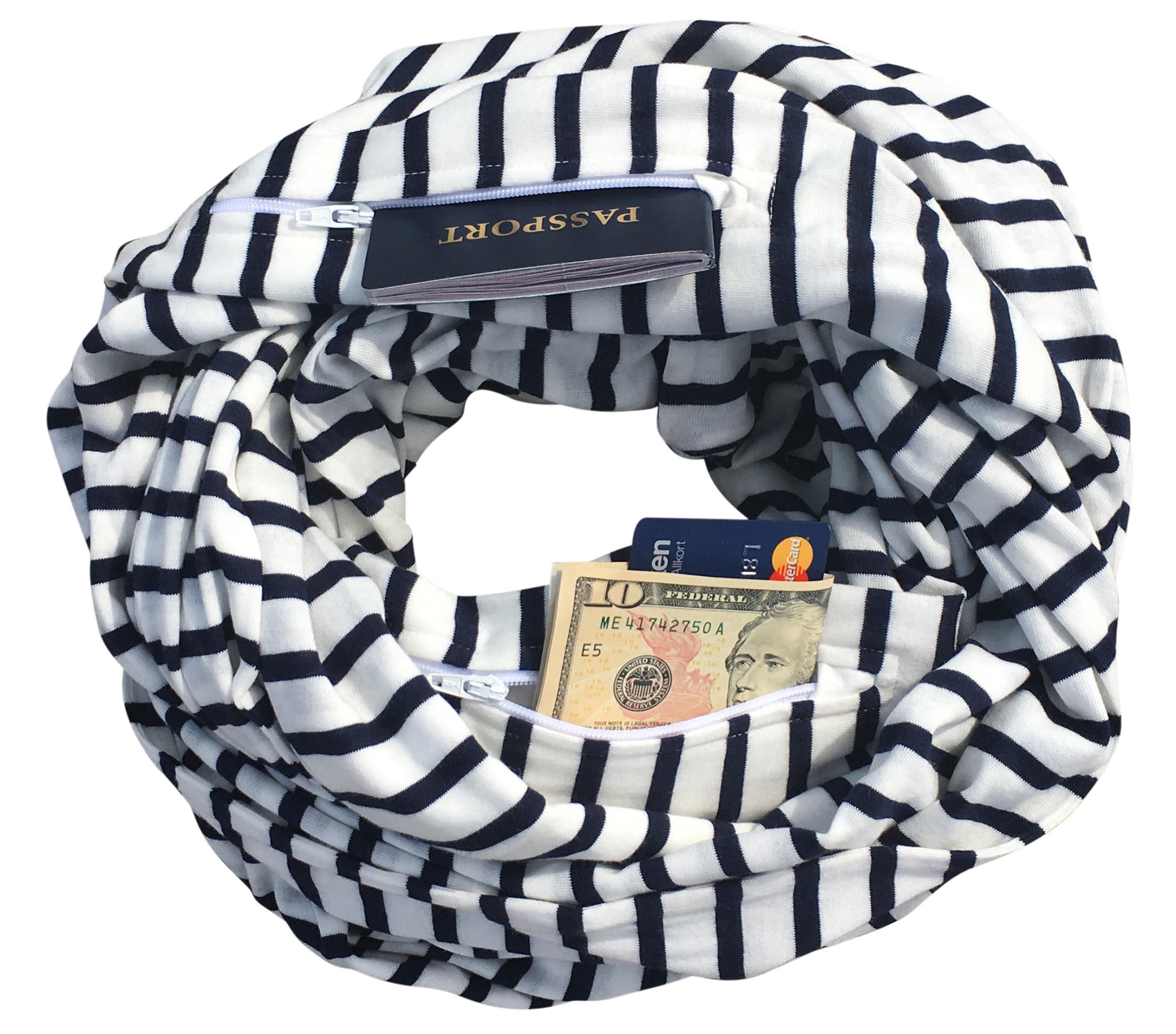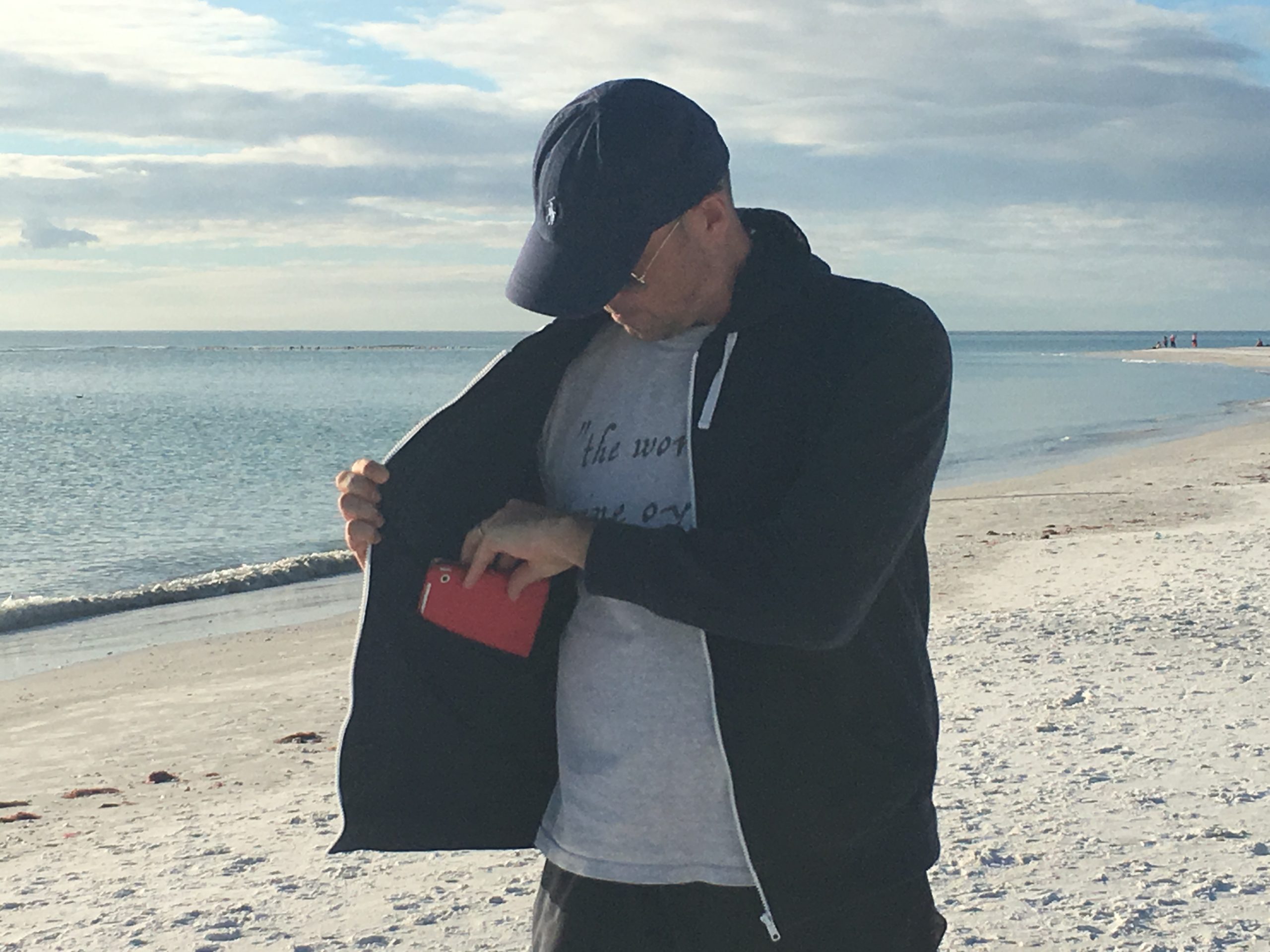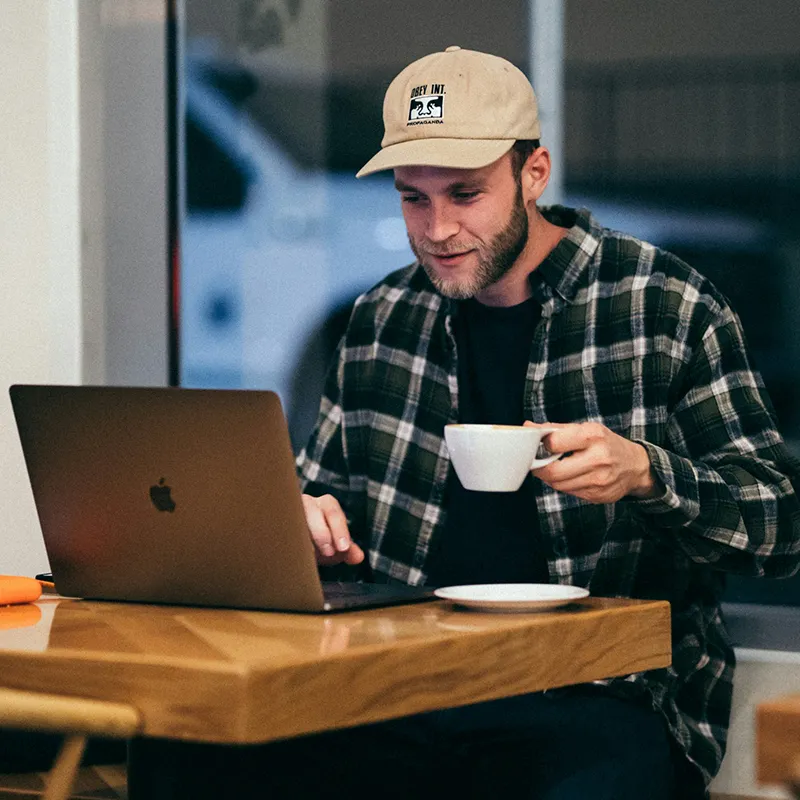A Life Designed for Freedom
Building a thriving travel gear brand is no easy feat. This family’s journey to achieving travel gear brand success will inspire you to take action. Johanna and her husband have crafted a unique lifestyle that allows them to travel the world while running their business. Originally from Sweden, they now live a location-independent life with their eight-year-old son. Their company, which they started to support their travels, has grown to generate $50,000 per month.
| About | Details |
|---|---|
| Founder | Johanna Denize |
| Company | Clever Travel Companion |
| Revenue | $50K/month |
| Location | Nomadic, originally from Sweden |
| Employees | 2 |
| Launched | 2011 |
The Motivation Behind the Business: Johanna and her husband were driven by the desire to live freely and spend more time with their son. They no longer work full-time on the business and have two employees to help with administration. Their goal has always been to live off an online-based business, freeing them from being tied to a specific location.
Balancing Work and Travel: Finding a balance between work and personal life is challenging when running your own business. They are always working, sourcing products, exploring new ideas, and meeting manufacturers, even while traveling.
The Sailboat Adventure: Currently, they are preparing to set sail to the Caribbean. As long as they have internet access, they can work from anywhere.
Creating Products for Travelers: The idea for the business stemmed from their own experiences with pickpockets while traveling. They designed products to help travelers keep their valuables safe, including underwear, t-shirts, leggings, hoodies, dresses, and scarves with secret, zippered pockets. Their best-selling product is a circle scarf with two hidden pockets.
The Backstory: An Idea Born from Experience
Scaling a travel gear brand requires focus, innovation, and persistence. This story of travel gear brand success highlights the essential strategies that helped this family thrive. Johanna’s passion for travel began at a young age. She met her husband while studying in Moscow, and they decided to travel together, backpacking across Asia. During these travels, Johanna faced multiple instances of theft, which inspired her to create better travel safety gear.

The Path to Entrepreneurship: Before starting their company, Johanna and her husband worked in venture capital and the startup world. Despite the challenges and setbacks, they gained valuable experience that would later help them in their own ventures.
A Nomadic Dream: When their son was born, they decided they wanted to spend more time with him and see more of the world. They chose to overhaul their lives and become truly nomadic. This decision led them to finally start their travel safety company.
Developing the Product: They had already designed the first products and were familiar with the sourcing process in China. They worked on developing the product and building a website simultaneously. Their first products were men’s and women’s underwear with hidden pockets for valuables.
Why Underwear? The idea was that travelers needed a way to completely hide their valuables, even while sleeping. Underwear with hidden pockets was the perfect solution.
Growing from Scratch: The Journey of Crafting and Marketing Travel Gear
Building the Business from the Ground Up
Johanna and her husband handled everything themselves in the beginning for travel gear brand success— from creating the website to designing the products. Being completely self-funded, they ran the business very lean.
First Breakthrough: The initial success came from a mention in the Sydney Morning Herald. Orders started coming in from Australia, sparked by a tiny offline newspaper notice. Encouraged by this, Johanna reached out to numerous travel writers and bloggers. The effort was painstakingly slow, involving countless hours of media outreach. However, persistence paid off when the travel editor at the LA Times featured them in a gift guide just before Christmas, significantly boosting their visibility.
Media Outreach Challenges: Media outreach involved emailing hundreds of writers, many of whom never responded. It was challenging but necessary to build momentum. Johanna relied heavily on cold emailing and sending samples, despite the mixed responses.
Designing, Prototyping, and Manufacturing: Finding a reliable manufacturer was one of the toughest challenges. Initially, they used an American sourcing company but soon moved to a company with US and China offices to handle smaller orders.
Prototyping Process: The first product was underwear with hidden pockets. Johanna and her husband tested various designs, wore, and washed prototypes repeatedly until satisfied with the quality. They then placed their first significant order.
Fulfillment and Expansion: Initially, Johanna’s sister in the UK managed fulfillment from her garage. However, sales were stronger in the US and Australia, leading them to eventually partner with a professional fulfillment service in the US.
Learning from Experience: They quickly learned what worked and what didn’t. Men preferred black, gray, and white underwear, while women wanted pink, black, and gray. This insight led to an expanded product line including tank tops, t-shirts, dresses, scarves, and leggings with hidden pockets.
Overcoming Manufacturing Challenges: Over the years, finding a manufacturer that maintained consistent quality proved difficult. They switched manufacturers multiple times, moving from China to India, and then to Turkey due to various issues like delivery delays and quality inconsistency.
Quality Control: Each new manufacturer underwent rigorous testing. Johanna sent samples, tested them extensively, and placed small test orders before committing to larger quantities. Packaging and labeling also had to meet strict standards to avoid additional costs and complications, especially when dealing with large fulfillment centers like Amazon.
Global Manufacturing: Though manufacturing in the US was considered, the cost was prohibitively high. Instead, they chose to manufacture in India and Turkey, where the costs were more feasible.
Operational Efficiency: The startup costs were kept low by handling everything themselves initially. The first significant expense was a $30,000 order, a gamble that ultimately paid off. Today, they have two staff members working on fulfillment, manufacturing, and customer service, all operating remotely.
Launching the Online Store: A Journey of Passion and Resilience
Creating the Online Presence
Johanna and her husband found that building a website in today’s age is both easy and enjoyable which will lead to travel gear brand success. Their current site, focused on middle to high-income, friendly travelers, reflects a design that appeals broadly rather than being overly trendy. Sizes range from XXS to XXXL, catering to diverse customer needs.
Lean Beginnings: Self-funded by selling their house, the couple invested everything into the business while living off their savings. It was a challenging few years, but their perseverance paid off as they now live comfortably without constant financial strain.
Attracting and Retaining Customers
Since their launch in 2011, Johanna and her husband have seen the rise of social media. They initially started with a website but soon added Pinterest, Facebook, and Instagram. While Pinterest didn’t yield much, Facebook proved effective, though it required careful tweaking to optimize ads.
Press Coverage: Press coverage has been a major driver of their growth. Securing mentions in publications like the LA Times gift guide significantly boosted their sales. Despite the difficulty of standing out in today’s crowded media landscape, they continue to focus on press outreach, which remains a consistent source of new customers.
Affiliates and SEO: Collaborations with bloggers in exchange for a percentage of sales, along with a strong SEO strategy, have further supported their growth. Their blog, focused on travel-related content, has helped improve their online visibility and attract organic traffic.
Current Status and Future Plans
With a steady stream of customers, Johanna and her husband are always brainstorming new product ideas. The design and prototype process is slow, but they are committed to launching five new products in the coming year. They are also transitioning staff and welcoming a new addition to their team.
Looking Ahead: The couple hopes to increase sales and is considering the possibility of a sale or merger in the future. Their entrepreneurial spirit drives them to constantly come up with and start new projects, but managing the growing company takes up much of their time.
Lessons Learned and Key Insights
Do-It-Yourself Ethic: Johanna emphasizes that there is no single right way to start a business. It’s all about taking action and getting things done. While starting a business requires a lot of hard work, the rewards of achieving a lifestyle of freedom and flexibility make it worthwhile.
Handling Difficult Customers: Dealing with unreasonable customers is one of the hardest aspects of the business. Despite their best efforts to provide excellent customer service, some customers remain dissatisfied. The couple always responds to messages the same day and goes above and beyond to resolve issues, but some challenges persist.
Providing Great Customer Service: Many customers are pleasantly surprised by the attentive service they receive. This often diffuses complaints and fosters loyalty. Despite the occasional scam or unreasonable demand, they remain committed to making every customer happy.
Challenges with Large Corporations: Navigating partnerships with large companies like Amazon can be time-consuming and frustrating. However, they continue to adapt and find ways to manage these relationships effectively.
Launching the Online Store: A Journey of Passion and Resilience
Navigating the Complex World of E-Commerce
The Challenges and Triumphs of Selling Online
Amazon’s Influence: Amazon undeniably impacts every e-tailer, either as a sales channel or as a competitor. While it drives significant sales, it also adds administrative burdens and frustrations. Johanna and her husband sell globally through their website and Amazon, but working with Amazon has proven to be challenging. The system is cumbersome, and making changes to product listings is nearly impossible. They tried Amazon Vendor Central but found it slowed sales. Transitioning back to Fulfillment by Amazon and regular sales required significant effort to clean up their listings.
Third-Party Challenges: Involving third parties often diverts time from core business activities. Although selling on Amazon is complex, the platform’s vast customer base makes it indispensable. Despite the challenges, Johanna believes Amazon could boost its revenues by simplifying and streamlining processes for sellers.
| Tools | Platforms |
|---|---|
| E-commerce | Shopify |
| Email Marketing | MailChimp |
| Customer Service | ZenDesk, Slack for internal communication |
| Reviews | Stampd |
| Social Media | Facebook, Instagram, Pinterest |
| Productivity | Google Suite, Slack |
| Payments | Shopify, PayPal |
| Analytics | Google Analytics |
| Advertising | Google Ads, Facebook Ads |
| Inventory Management | DEAR Inventory |
Influential Resources and Learning
Books and Podcasts: Johanna and her husband have read works by Tim Ferriss, Seth Godin, and other startup and entrepreneur resources. While these are inspirational, Johanna notes a gap in practical, hands-on advice for small, lean, self-funded companies. She emphasizes the need for books that provide detailed steps on getting press, engaging customers, creating prototypes, and effectively buying ads.
The Reality of Small Business: Most companies do not achieve overnight success; they grow steadily over years. Johanna and her husband value real-life stories and practical advice for taking a business to the next level without expanding too much in terms of staff and size.
Advice for Aspiring Entrepreneurs
Hard Work and Persistence: Starting with minimal funding but significant effort, Johanna and her husband worked tirelessly every day and evening for travel gear brand success. They advise new entrepreneurs to be prepared for the hard work required to make a product visible in a crowded market. Consistent effort in reaching out to the press and maintaining perseverance is crucial.
Lean Operations: Keeping operations lean is essential. Hiring consultants and specialists for everything can delay profitability. Learning to handle various aspects of the business personally helps in understanding the processes, products, and customers deeply.
Belief in Self: Johanna stresses that starting a business is not rocket science. The core concept is simple, but the execution requires persistence. Working for oneself and building something for the family is rewarding, and taking control of one’s life is a powerful motivator.
Moving Forward
Johanna and her husband plan to continue growing their business while keeping it small and manageable. They aim to maximize the potential of Clever Travel Companion without expanding too much, maintaining their unique lifestyle and entrepreneurial spirit.


